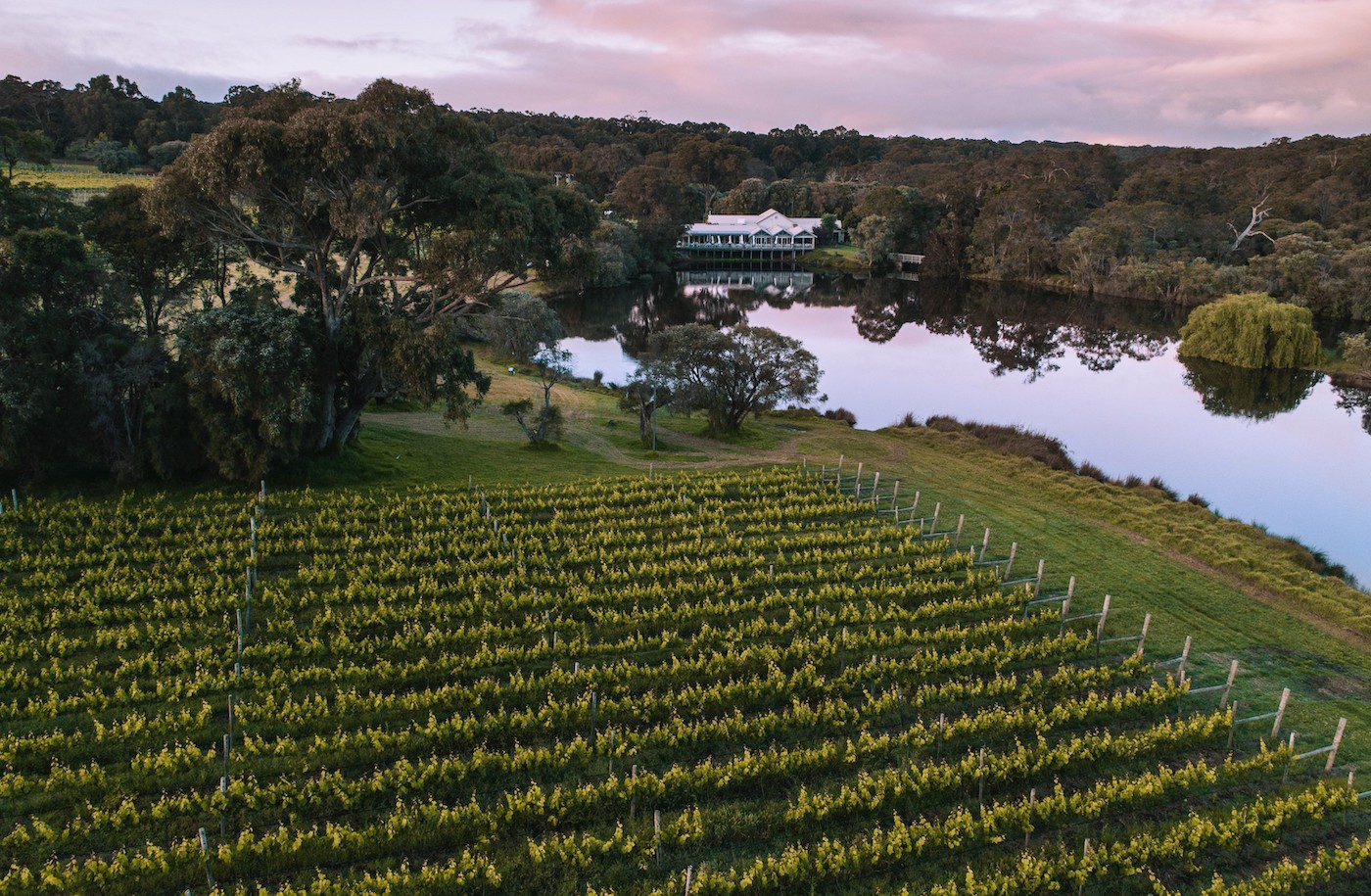South Australia - A Symphony of Terroirs
Exploring South Australia's Premier Winery Locations:
South Australia, often referred to as the wine capital of Australia, is renowned for its diverse and prestigious wine regions. From the iconic Barossa Valley to the cool-climate Adelaide Hills, each area offers unique conditions that contribute to the distinct characteristics of the wines produced. This article delves into the key wine regions of South Australia, exploring the environmental factors that shape the vineyards and the resulting wine profiles.

Barossa Valley: The Heart of Australian Wine
The Barossa Valley, located just over an hour's drive from Adelaide, is perhaps the most famous wine region in Australia. With a winemaking history dating back to the mid-19th century, the Barossa is synonymous with bold, rich Shiraz—a wine that has garnered international acclaim.
Climate and Soil: The Barossa Valley enjoys a Mediterranean climate, characterized by hot, dry summers and mild winters. This climate, combined with the region's old, deep soils—primarily composed of red clay loam over limestone and sandy soils—creates ideal conditions for the cultivation of Shiraz and other robust red varietals. The consistent warm temperatures during the growing season allow the grapes to ripen fully, leading to wines with intense fruit flavors, high alcohol content, and robust tannins.
Wine Profile: Barossa Valley Shiraz is known for its deep color, full body, and rich flavors of dark fruits, chocolate, and spice. The region also produces exceptional Grenache and Mataro (Mourvèdre), which are often blended with Shiraz to create the classic GSM blend. The warm climate and long ripening period enable these wines to develop complexity and depth, making them favorites among wine enthusiasts worldwide.

McLaren Vale: Coastal Influence and Rich Diversity
South of Adelaide lies McLaren Vale, a wine region celebrated for its diverse range of wines, from Shiraz to Grenache and Cabernet Sauvignon. The region's proximity to the Gulf St Vincent provides a unique maritime influence that distinguishes McLaren Vale wines.
Climate and Soil: McLaren Vale enjoys a Mediterranean climate similar to the Barossa Valley but with a significant maritime influence due to its coastal location. This coastal proximity moderates temperatures, resulting in cooler nights and a longer growing season. The region's soils are incredibly diverse, ranging from red-brown loams to deep sand and black clay. This diversity allows for a wide variety of grape varietals to thrive, each expressing distinct characteristics based on their terroir.
Wine Profile: McLaren Vale Shiraz tends to be slightly more restrained than its Barossa counterpart, often exhibiting a fresher, more fruit-forward profile with softer tannins. The region is also known for its Grenache, which can range from bright and spicy to rich and concentrated. Cabernet Sauvignon from McLaren Vale benefits from the cooler nights, producing wines with balanced acidity and structured tannins. The region's commitment to sustainability and organic viticulture further enhances the quality and uniqueness of its wines.

Adelaide Hills: Cool-Climate Elegance
The Adelaide Hills, located just east of Adelaide, is one of Australia's premier cool-climate wine regions. Known for its elegant white wines, particularly Sauvignon Blanc and Chardonnay, the Adelaide Hills also produce outstanding Pinot Noir and sparkling wines.
Climate and Soil: The Adelaide Hills are characterized by a cooler, wetter climate than the nearby Barossa and McLaren Vale regions. The elevation of the vineyards, which can reach up to 700 meters above sea level, plays a crucial role in moderating temperatures, leading to slow ripening and the development of complex flavors. The region's soils are varied, including sandy loam, clay, and shale, providing excellent drainage and contributing to the finesse of the wines.
Wine Profile: The cool climate of the Adelaide Hills allows for the production of wines with high natural acidity, crispness, and aromatic intensity. Sauvignon Blanc from this region is typically zesty, with bright citrus and tropical fruit notes. Chardonnay is refined and elegant, often displaying flavors of white peach, nectarine, and subtle oak influence. Pinot Noir from the Adelaide Hills is known for its vibrant red fruit character, soft tannins, and delicate spice. The region's cooler temperatures also make it ideal for producing high-quality sparkling wines, often crafted in the traditional method.

Clare Valley: The Riesling Capital
North of the Barossa Valley lies the Clare Valley, a region renowned for producing some of the world's finest Riesling. This area, with its combination of elevation and unique soils, is perfectly suited for crafting crisp, aromatic white wines.
Climate and Soil: The Clare Valley features a continental climate with warm days and cool nights, a combination that is ideal for growing Riesling. The diurnal temperature variation helps retain the natural acidity in the grapes, which is essential for producing the region's signature crisp and refreshing Riesling. The soils of Clare Valley are predominantly composed of limestone and slate, which contribute to the minerality and structure of the wines.
Wine Profile: Clare Valley Rieslings are celebrated for their purity, intense citrus flavors, and steely acidity. Young Rieslings from this region often exhibit vibrant lime and green apple notes, while those aged in the bottle develop more complex flavors of honey, toast, and petrol. In addition to Riesling, the Clare Valley also produces excellent Shiraz and Cabernet Sauvignon, which benefit from the region's warm climate and structured soils, resulting in wines with concentrated fruit flavors and firm tannins.

Coonawarra: The Terra Rossa Treasure
Coonawarra, located in the Limestone Coast region, is another South Australian gem, particularly known for its world-class Cabernet Sauvignon. The region's unique terra rossa soil is the key to its viticultural success.
Climate and Soil: Coonawarra enjoys a maritime climate with cool, wet winters and warm, dry summers. However, it is the region's distinctive terra rossa soil—a red, iron-rich topsoil over a limestone base—that sets it apart. This soil is prized for its excellent drainage and ability to retain heat, providing an optimal environment for growing Cabernet Sauvignon.
Wine Profile: Coonawarra Cabernet Sauvignon is renowned for its structure, elegance, and longevity. These wines typically display intense flavors of blackcurrant, mint, and eucalyptus, with firm tannins and a refined finish. The terra rossa soil contributes to the distinctive minerality and complexity of the wines, which age gracefully over decades. While Cabernet Sauvignon is the star of Coonawarra, the region also produces notable Shiraz and Merlot, each reflecting the unique terroir of the area.
A Symphony of Terroirs
South Australia's wine regions offer a remarkable array of wines, each shaped by the unique environmental factors of their respective terroirs. From the robust Shiraz of the Barossa Valley to the elegant Riesling of the Clare Valley, the diversity of soils, climates, and topographies across these regions contributes to the extraordinary range and quality of South Australian wines. Whether you are a seasoned wine connoisseur or a casual enthusiast, exploring these regions provides a fascinating insight into the intricate relationship between the environment and the wine in your glass. Each sip tells the story of the land, the climate, and the winemaker's craft, making South Australia's wines truly exceptional on the global stage.



